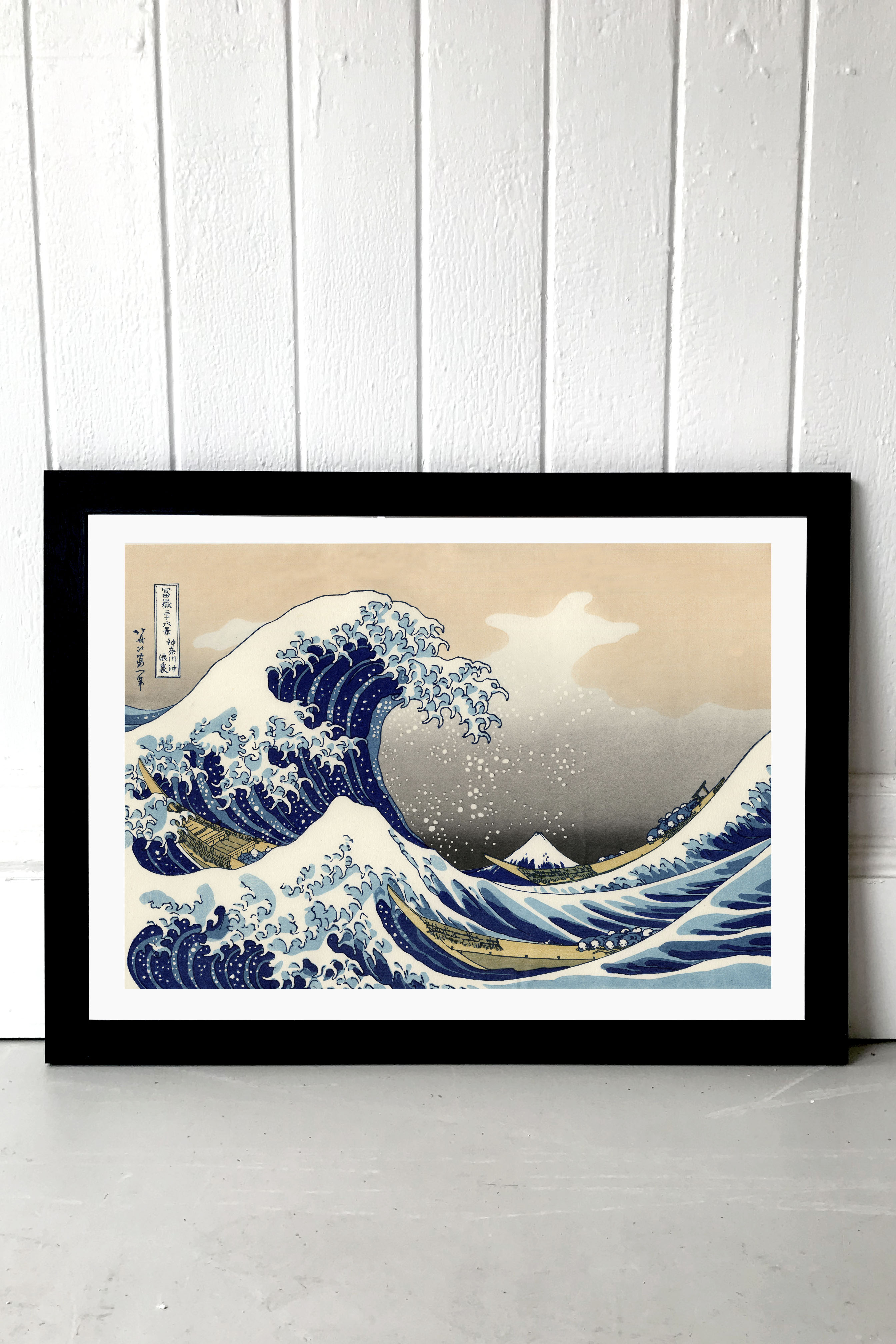The Old Man Mad About Art: 6 Notes on Hokusai
Posted by Lauren Pennycott on 3rd Jan 2019
The iconic print of a rip roaring wave consuming longboats, sailors and Mount Fuji has landed at East End Prints. Consider our 6 surprisingly inspirational factoids about the image and the artist as we embark on the New Year!
The Great Wave Off Kanagawa was a woodblock print, not a painting.
And further from being a one off print itself it was part of Hokusai's 36 Views of Mount Fuji series. Although it is not the most obvious focal point of the image, the mountain's iconic cultural status is largely responsible for the prints popularity then and now.
Early prints get the worm.
There are now value discrepancies between prints from the original block depending on how early in the run a given print appears to have been produced. Editions of the The Great Wave are on display in a great many of the worlds most prestigious museums and collections where the 'earliness' of copies is boasted. Natural deterioration of woodblocks occurs as they are used repeatedly; over time the definition, sharpness of line and crispness of colour is lost. Therefore the earlier the print, the higher the value in todays art market.
A print for the price of a bowl of rice
He was a canny business person and his success as an artist was down to his thoroughly commercial approach. Instead of making art designed to be the preserve of the rich, as was the precedent in Europe, Hokusai sold prints for cheap. Because of the woodblock technique he was able to make his skilful carving pay again and again by producing large numbers of prints. It is thought that he sold prints for the price of a bowl of rice at the time, Hokusai simultaneously democratised the ownership of his prints and made himself a living.
Hokusai was a real name changer
It was not uncommon for Japanese artists to change their names but Hokusai did so more often than any other major artist of his era. Art historians have mapped a change roughly once every decade. Born Tokitaro, he published his first series of prints in 1779 under the name Shunro, given by his first master. In later life, he referred to himself as Gakyo rojin manji, or The Old Man Mad About Art. Hokusai is a great example of a tradition that many artists still employ today where a change in name acts as a marker for changes in creative cycles. Consequently, Hokusai’s many names can be used to identify different periods of production.
He moved house...a lot!
His insatiable penchant for a name change was rivalled only by his love of moving house: although he never left the same region of Japan, Hokusai lived in more than 90 dwellings during the course of his life.
To Hokusai Age Was a Gift
Painting from the age of four, Hokusai started young and by the time he was 14 he had begun his apprenticeship as a woodblock carver. Katshushika Hokusai devoted his whole life to making.
‘When I was 50 I had published a universe of designs, but all I have done before the age of 70 is not worth bothering with...When I am 80, you will see real progress. At 90, I shall have cut my way deeply into the mystery of life itself...At 110, everything I create — a dot, a line — will jump to life as never before.’
Content credit: Sotherby's and mentalfloss.com


